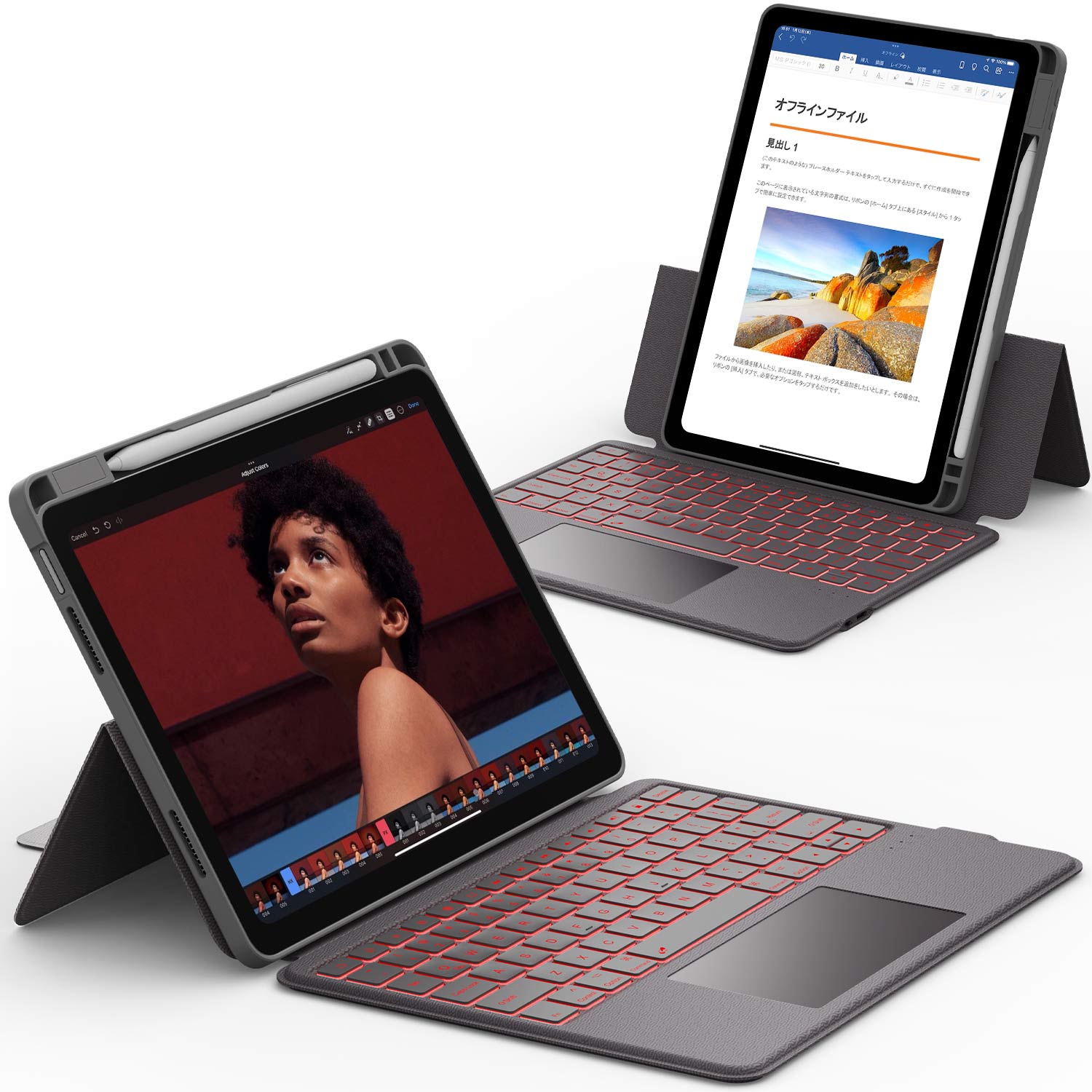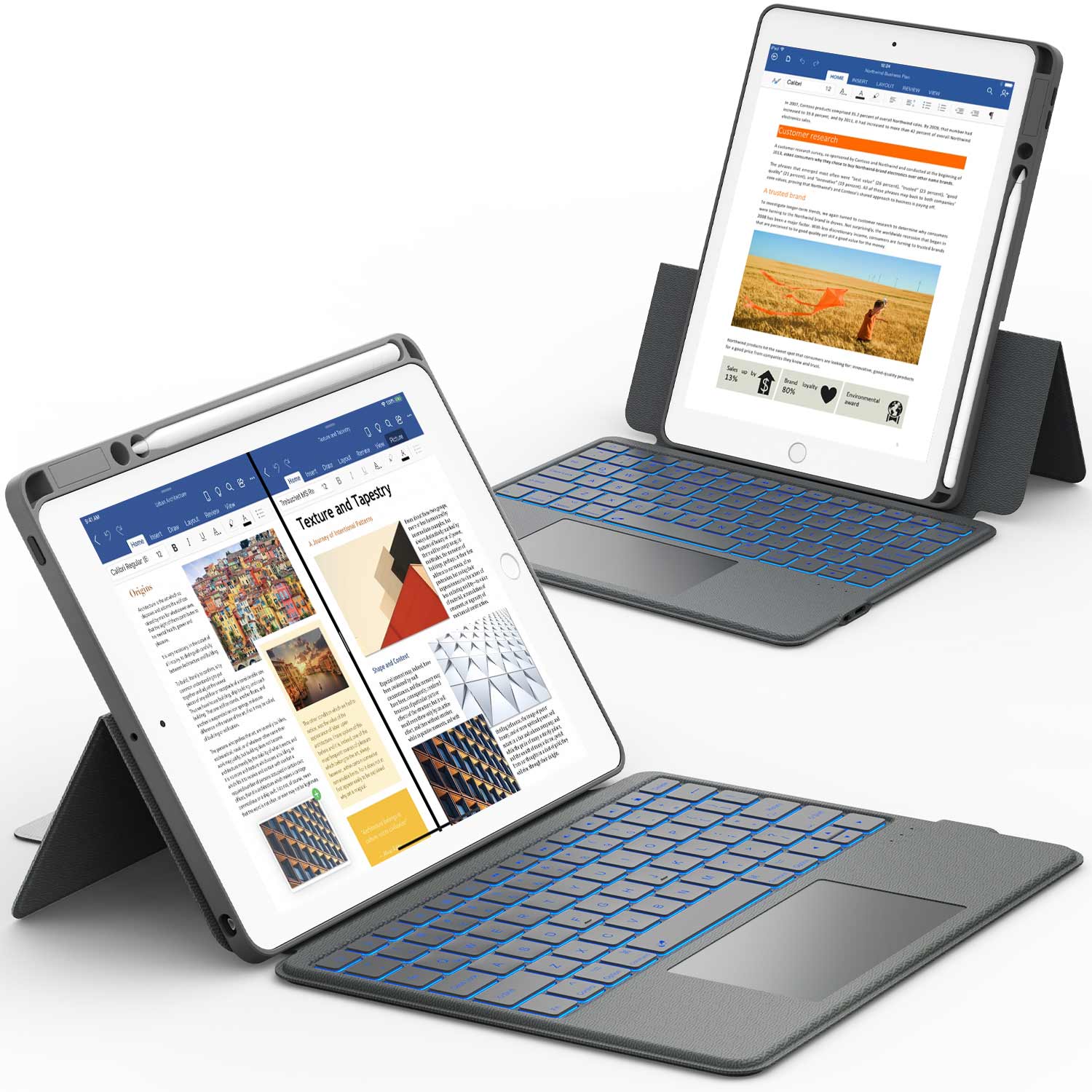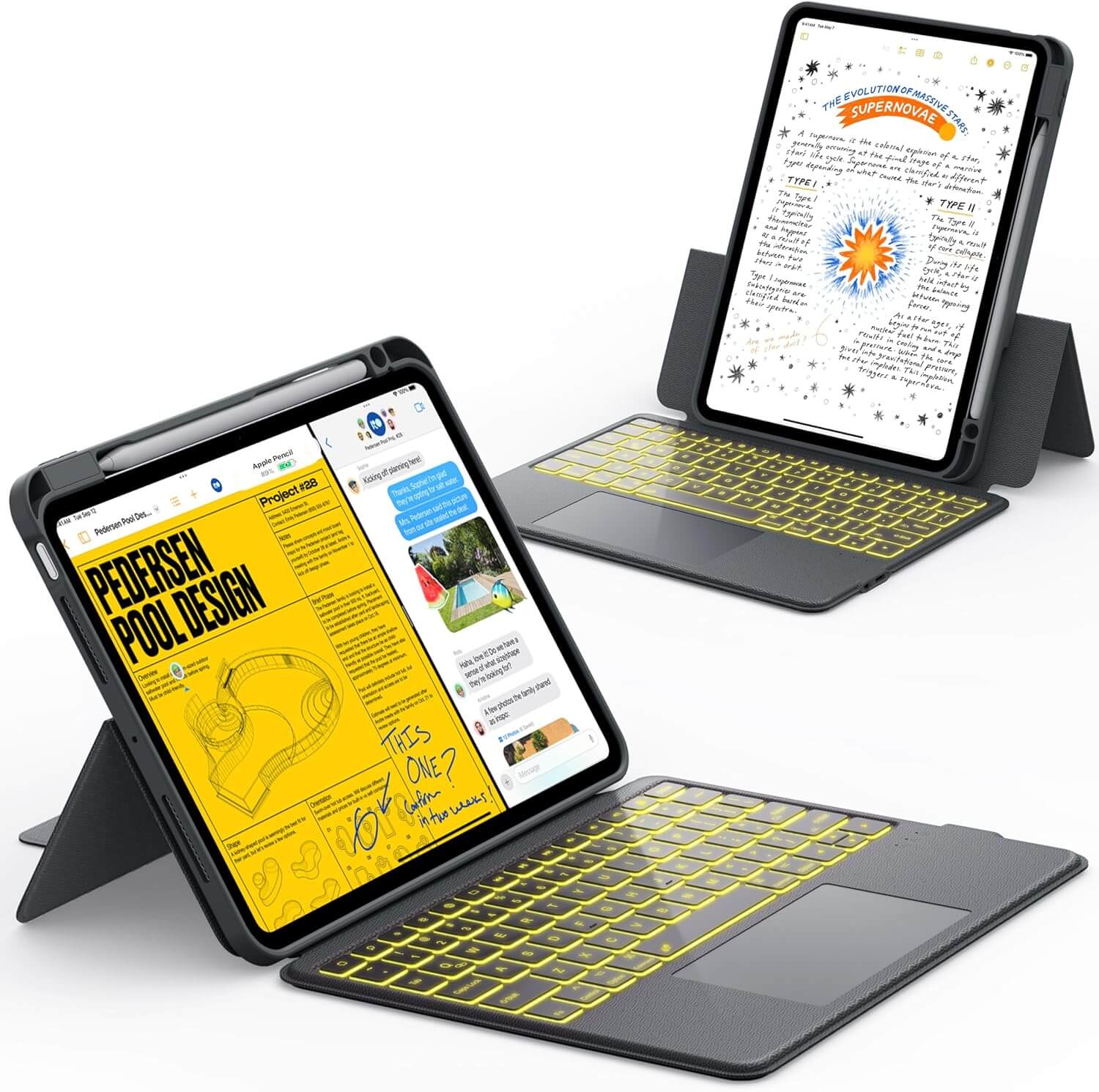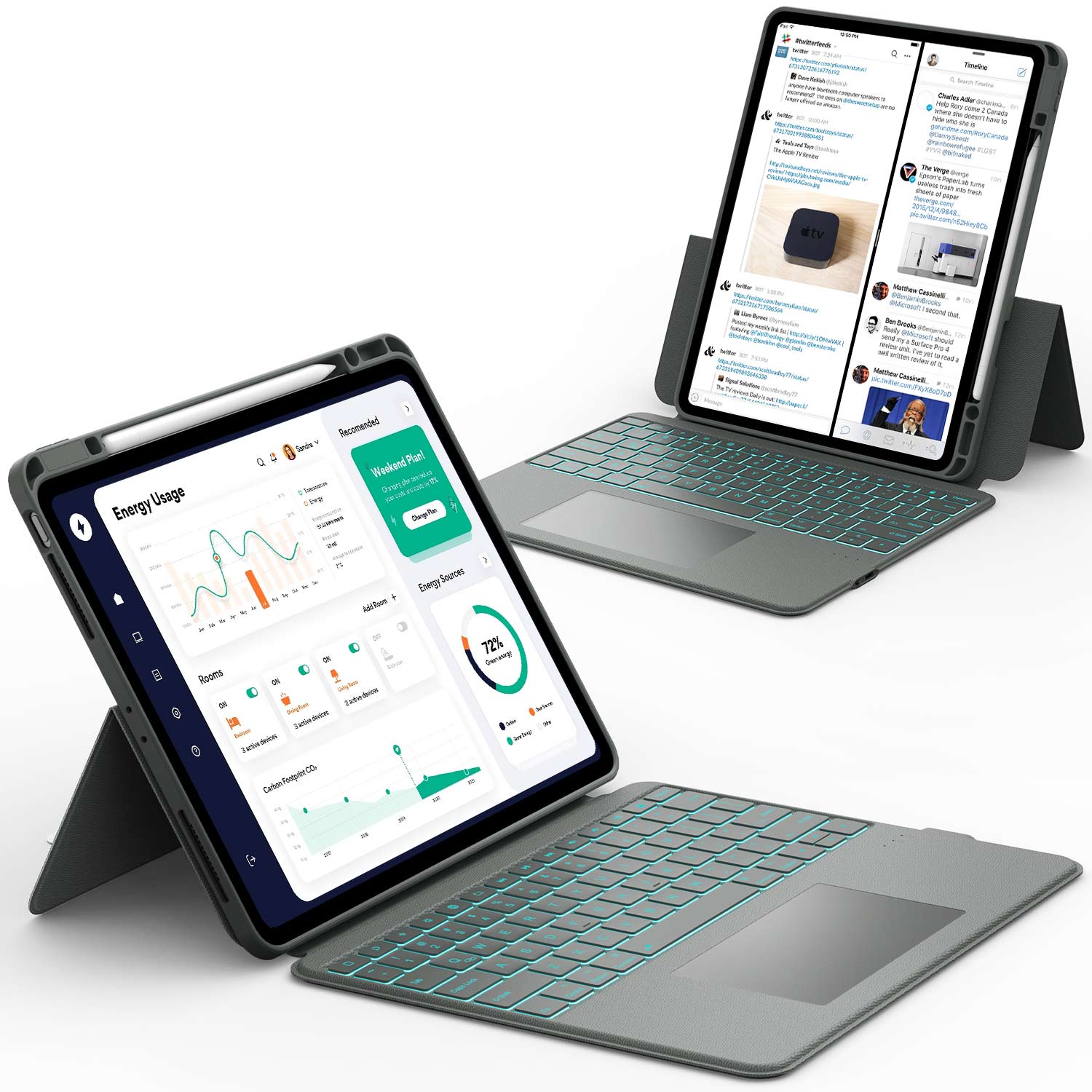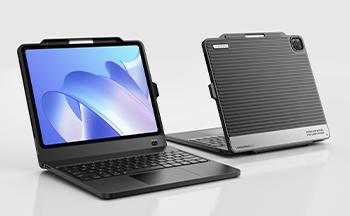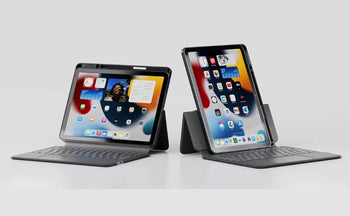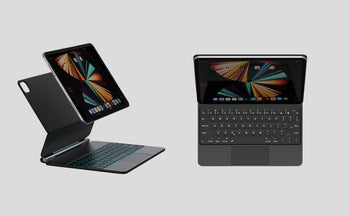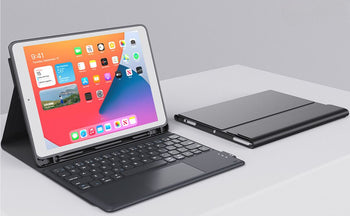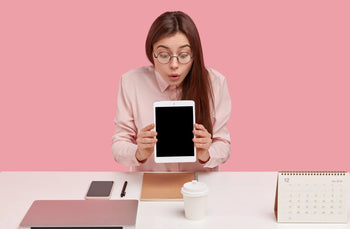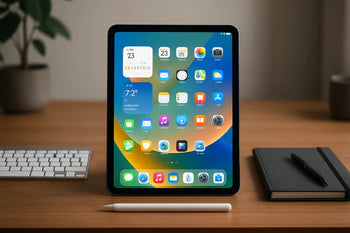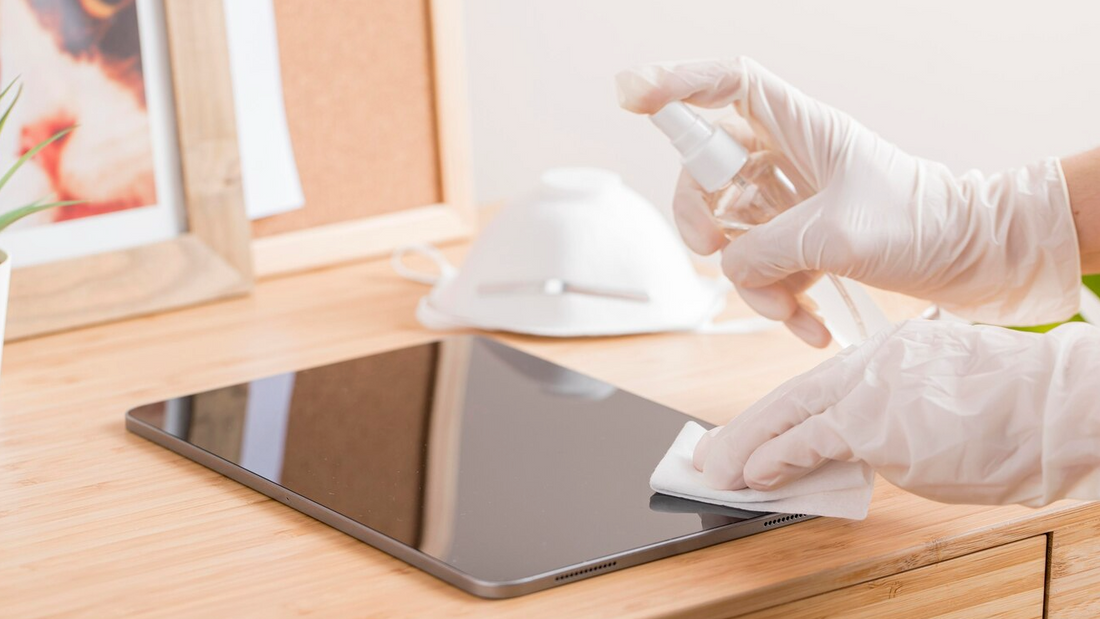What should I use to clean my iPad screen? If you've asked this before, you're not alone. iPad screens easily collect fingerprints, smudges, and dust, making them hard to see and use.
The safest way to clean your screen is with a soft, lint-free cloth that’s slightly damp. Avoid using strong cleaners or anything rough that could scratch it.
Using the wrong method can damage your screen, so knowing what works and what doesn’t is important.
In this guide, you’ll learn the safest tools, the best cleaners, and what to avoid to keep your screen spotless without damage.
What Should I Use to Clean My iPad Screen Without Damaging It?

Your iPad screen can get dirty fast. Fingerprints, dust, and smudges can build up over time, making it hard to see clearly. Cleaning it the right way not only helps you get a better view, but also keeps your screen looking new and protects it from scratches.
The key is using the right tools and avoiding anything that could damage the surface.
Use a Microfiber Cloth for Everyday Cleaning
The best way to clean your iPad screen daily is with a microfiber cloth. This soft, gentle cloth is made to clean delicate surfaces like glass.
- Microfiber does not scratch your screen and does not leave behind lint or fuzz.
- It picks up dust, fingerprints, and smudges easily.
- Gently wipe the screen in small, circular motions. You do not need to press hard.
- If the cloth is dirty, wash it first. A dirty cloth can rub dirt or grit into your screen and cause scratches.
- Avoid using things like paper towels, tissues, or your shirt. They might feel soft but can scratch the screen or leave behind tiny fibers.
A dry microfiber cloth is perfect for light cleaning and quick wipe-downs. Keep one in your bag or near your workspace to clean your screen anytime.
Slightly Damp Cloth for Stubborn Smudges
If your screen has sticky spots or greasy marks that a dry cloth cannot remove, you can use a damp cloth, but be careful with the amount of moisture.
- Lightly dampen a corner of your microfiber cloth with plain water. Do not soak it.
- Never spray water or any cleaner directly onto your iPad screen. Doing so could allow moisture to penetrate the device and cause damage.
- Wipe the screen gently with the damp part of the cloth, then use a dry part to remove any leftover moisture.
- Do not use household cleaners, window sprays, alcohol, or any cleaning product not approved by Apple. Many of these contain strong chemicals that can harm the screen’s coating.
This method is practical when your screen needs a deeper clean, but should still be done gently.
Apple’s Official Cleaning Advice
Apple recommends using only a soft, lint-free cloth, like microfiber, for cleaning. They warn against using abrasive materials or harsh chemicals because these can damage the screen’s special coating.
If you need to disinfect your iPad, such as during cold and flu season, Apple says you can use certain disinfectant wipes safely:
- 70% isopropyl alcohol wipes
- Clorox Disinfecting Wipes
Important tips when using disinfectant wipes:
- Wipe the screen gently. Do not rub too hard or use too much pressure.
- Make sure the wipes are not too wet. Excess moisture can enter your iPad’s openings and damage the internal parts.
- Avoid using bleach, hydrogen peroxide, or other strong disinfectants. These are too harsh for your screen.
- Do not wipe around the charging port, speaker holes, or buttons with wet wipes.
Following these simple steps helps keep your screen clean without risking damage. You’ll remove germs and grime while still protecting your iPad.
A clean screen makes a big difference. It looks better, feels better, and is easier to use. Try to clean your iPad once every few days or whenever you notice smudges or dirt. Use the right cloth, be gentle, and avoid anything too wet or rough.
By taking care of your screen properly, you’ll keep your iPad looking sharp and working great for years to come.
📢 Also Read: What Is the Best Screen Protector for iPad? Your Buying Guide
What Should I Use to Clean My iPad Screen If It’s Really Dirty?

If your iPad screen has stubborn spots or smudges, it's important to use the right products and techniques. Some cleaners are safe for electronics, while others can damage your device or leave streaks.
Screen-Safe Cleaners to Consider
Products made for electronic screens are best for tough grime. You can use a cleaner like WHOOSH! Screen Shine or iKlear. These gentle products do not contain harsh chemicals that hurt your iPad’s screen.
Avoid using:
- Ammonia-based cleaners
- Window cleaners (like Windex)
- Household sprays
Harsh chemicals can damage the protective coating on your screen. Stick to screen or device cleaners made for electronics. If you aren't sure about a product, check its label for safety with electronics or Apple devices.
How to Use Screen Cleaner Properly
Always spray the cleaner onto a microfiber cloth, not directly onto the screen. This keeps moisture out of your device’s openings.
Here’s how to do it:
- Lightly spray the cleaner onto a clean, soft microfiber cloth.
- Gently wipe the screen using small, circular motions.
- Use only as much pressure as you need, and never scrub.
- Make sure no liquid drips into ports, speakers, or buttons.
📌Tip: For extra dirty spots, use the dampened part of your cloth first, then a dry part to finish.
Can I Use Lens Cleaning Wipes or Glasses Cleaners?
You can use lens cleaning wipes or glasses cleaners if they are alcohol-free and specifically labeled safe for electronics.
Look for:
- Lint-free wipes
- Alcohol-free formulas
- Labels that mention use with phone or tablet screens
Avoid:
- Paper towels or tissue, which can scratch the surface
- Wipes with alcohol, ammonia, or bleach
Always test a new wipe in a small area first to make sure it’s safe. If it leaves streaks or residue, switch to a cleaner made for screens.
Step-by-Step Guide: How to Clean Your iPad Screen Safely
If your iPad screen is covered in fingerprints or smudges, you can clean it safely at home. The correct technique and cleaning materials help prevent scratches and other damage.
Dry Cleaning Method (For Light Dust & Fingerprints)
For everyday cleaning, a dry microfiber cloth works best. Microfiber is soft and gentle so that it won’t scratch the screen.
Steps:
- Power off your iPad and disconnect any cables.
- Hold the iPad with one hand to keep it steady.
- Use a clean microfiber cloth. Do not use paper towels or rough fabrics, as they can leave scratches.
- Wipe the screen using soft, circular motions.
- If needed, gently buff any leftover spots using the same cloth.
Avoid using tissues, napkins, or clothing. Never use window cleaners or household sprays.
Damp Cleaning Method (For Stubborn Smudges)
Sometime,s smudges or sticky spots need more than a dry cloth. A slightly damp microfiber cloth is effective.
Steps:
- Turn off your iPad and unplug all connections.
- Lightly dampen a microfiber cloth with distilled water. Do not soak the cloth, just enough to moisten it.
- Gently wipe the screen, avoiding speaker openings, charging ports, and buttons.
- Stick to soft, circular motions.
- When finished, use a dry part of the cloth to remove leftover moisture.
Avoid spraying water directly onto the screen. Do not use rubbing alcohol, bleach, or harsh chemicals, as these can harm the screen’s coating.
📢 Also Read: Do I Need a Screen Protector If I Have a Case? (For iPad Users)
What NOT to Use on Your iPad Screen

Some cleaners and clothes can ruin your iPad’s screen or remove the coating that keeps fingerprints away. Using the wrong products can also scratch the glass or leave permanent marks.
Avoid These Harmful Cleaners
Avoid using any of the following on your iPad screen:
- Window and glass cleaners (like Windex)
- Products containing ammonia
- Vinegar or other acidic solutions
- Bleach or cleaners with bleach
- Hand sanitizer or wipes with alcohol
These cleaners contain chemicals that can break down your screen's oleophobic (oil-repelling) layer. Once this layer is damaged, your iPad screen can become more prone to fingerprints and smudges.
Spraying these substances directly on the screen can also push moisture into the device, increasing the risk of electrical damage.
Instead of these harsh products, always stick to a soft, slightly damp microfiber cloth and avoid spraying anything directly on your iPad.
Why Paper Towels and Tissues Can Scratch Your Screen
Paper towels, napkins, or tissues might seem safe, but their fibers are rough. Over time, they can leave small scratches across your screen.
These scratches can wear down or remove the oleophobic coating. Once this happens, your screen will pick up fingerprints more easily and look dull.
- Paper towels break up into little pieces and can leave behind lint.
- Even a single use may leave tiny marks you can’t fix.
- These materials are made to be tough for cleaning spills, not for delicate electronics.
To keep your iPad screen clean and clear, use only a lint-free microfiber cloth designed for screens. This material does not scratch or leave behind debris.
📢 Also Read: How to Choose the Best iPad Keyboard Case for Protection?
How to Clean iPad Screen Protectors & Cases

Keeping your iPad's accessories clean helps prevent scratches and keeps germs away. The correct method depends on whether you're cleaning the tempered glass screen protector or the case.
Cleaning Tempered Glass Screen Protectors
A tempered glass screen protector can be cleaned like your iPad’s main screen. Use a soft, lint-free microfiber cloth. Lightly dampen the cloth with water if needed.
Avoid using paper towels, tissues, or anything rough, as these can scratch the glass. Do not spray water or cleaner directly onto the screen; apply it to the cloth first.
If you notice fingerprints or smudges that are hard to remove, you can use a wipe with a small amount of 70% isopropyl alcohol. Gently wipe the protector, then dry it with a clean microfiber cloth.
Wiping Down iPad Cases (Silicone, Plastic, or Folio)
Case cleaning depends on the material. Use mild dish soap and water for silicone, plastic, or folio cases.
Steps to clean your iPad case:
- Remove the case from your iPad.
- Mix a small amount of mild soap with warm water.
- Dip a clean, soft cloth into the soapy water. Wring it out so it is damp, not wet.
- Wipe down the case inside and out.
- Use a second cloth dampened with just water to remove any soap.
- Dry the case with a clean, dry cloth.
Do not submerge the case or let water get into seams or ports if there are any. Let the case air dry completely before putting it back on your iPad.
📢 Also Read: Do iPads Really Need a Case? 5 Benefits Revealed
Maintaining a Clean iPad Screen for Long-Term
Keeping your iPad screen clean takes more than wiping it occasionally. Simple habits can help protect the screen, reduce smudges, and keep dust away.
Preventative Care Tips:
- Clean your hands before using your iPad. This reduces the amount of oils and dirt that transfer onto the screen.
- Use a soft, lint-free microfiber cloth regularly. These cloths safely remove fingerprints without scratching.
- Avoid eating while using your iPad to prevent food crumbs and grease from getting on the screen.
Ways to Reduce Fingerprints & Smudges:
- Apply an anti-smudge or oleophobic screen protector. These help resist oils from your fingertips, so the screen stays cleaner between cleanings.
- Limit touching the screen with dirty or sticky hands, and remember to wipe your hands if you’ve been handling messy items.
Storing Your iPad to Avoid Dust Buildup:
- Keep your iPad in a protective case or sleeve when not in use. This helps shield it from dust, lint, and accidental scratches.
- Store your iPad in a clean, dry place away from food, pets, and sources of dirt.
Regular cleaning and smart storage are simple steps to keep your iPad screen clear and bright.
Conclusion
The way you clean your iPad screen matters. One of the safest choices is to use a soft, lint-free cloth, like a microfiber cloth. Avoid paper towels, rough fabric, or anything that could scratch the display.
Do not use window cleaners, household cleaners, aerosol sprays, or any strong chemicals. Water alone or a slightly damp cloth is usually enough. Make sure your device is turned off before you start cleaning.
Apple recommends that you avoid getting moisture in any openings. Wipe the screen gently in a circular motion, and let it dry completely before turning your iPad back on.
Protect your iPad screen with Chesona Keyboard Case to help prevent dirt and scratches in the first place.
Frequently Asked Questions
You should be careful about the products and methods you use to clean your iPad screen. Not every cleaner or wipe is safe for your device, and the right cleaning habits can protect your screen from damage.
Can I use Clorox wipes on my iPad screen?
You can use Clorox Disinfecting Wipes on the hard, non-porous surface of your iPad. Make sure the wipe is not too wet, and avoid letting any liquid enter the device openings. Wipe gently, and follow up with a dry microfiber cloth if needed.
Can I use alcohol wipes to clean my iPad screen?
You can use alcohol wipes with 70% isopropyl alcohol to gently disinfect your iPad screen. Do not use wipes that drip liquid. Make sure no moisture gets into the buttons or speakers. Always avoid using straight alcohol poured directly onto the screen.
Is it safe to use Windex on my iPad screen?
You should not use Windex or other glass cleaners on your iPad screen. These products contain harsh chemicals that can damage the screen's coating. Stick to water-dampened microfiber cloths or approved wipes.
How often should I clean my iPad screen?
Clean your iPad screen whenever you notice smudges, fingerprints, or dirt. For most people, once a week is enough. Clean it often if you use your iPad daily or let others handle it.
Can I use a screen protector to reduce smudges?
A screen protector can help reduce smudges and fingerprints and add an extra layer of protection against scratches. Many screen protectors are easy to clean and can be wiped with a microfiber cloth.
Why does my iPad screen look worse after cleaning?
If your screen looks streaky or hazy after cleaning, you may have used too much liquid or the wrong type of cleaner. Lint or residue from a non-microfiber cloth can also cause spots. Use a clean, dry microfiber cloth to buff the screen and remove streaks gently.
